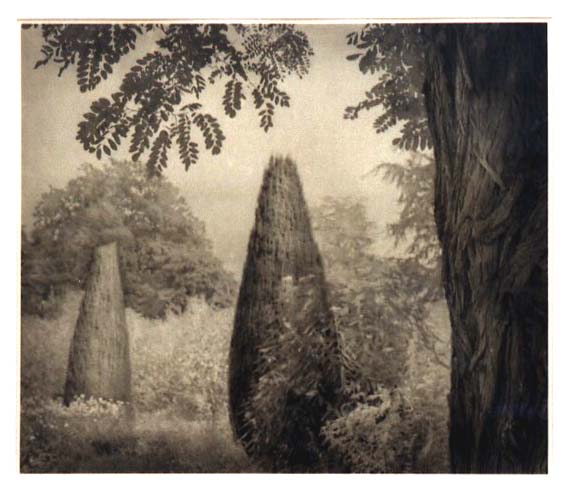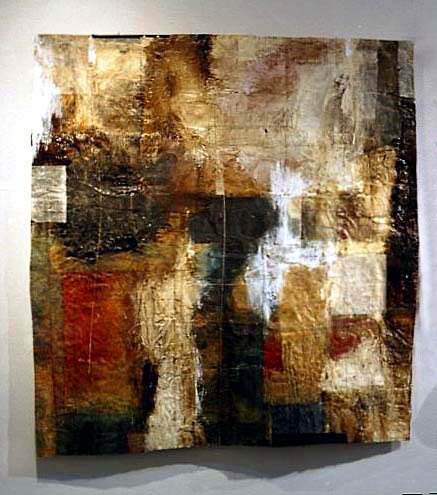State Fair Winners: Photography, Fibers
Beth Dow and Mary Hark are the winners in photography and textiles and fibers. Their profiles follow.


Beth Dow
Grand Prize winner, photography
“Trees, Hidcote,” platinum palladium print
You find an old photograph in a drawer. It reveals a place where something is about to happen, something odd. Beth Dow’s photos evoke this feeling. Her work in the Fair show seems to hide as much as it reveals.
Dow shoots photos of formal gardens in England, where she lived for eight years, working in a photo gallery and eventually doing her own photos. She’s back in Minnesota, and was a McKnight Fellow in photography this year. (Look for her work in the McKnight photography show in November at the Katherine Nash Gallery.)
Dow says of this photo, “It’s part of a big body of work on formal gardens. It’s about the odd shapes and views that these gardens offer, about looking at different ways of compressing space. They’re kind of like stage sets, like theatrical spaces. And the English smog is so photogenic!”
The otherworldly look of these settings is intentional; Dow sees the spaces as settings for human drama that is always about to happen, or that has just occurred. The prints seem old in part because the process Dow uses is old—the platinum palladium print, a process almost as old as the medium itself, yields a rich and incomparably subtle range of greys. She uses this characteristic to create a world of veiled happenings, a world in suspense, a world that emerges from the fog of the past, and then recedes into it again.
.Mary Hark
Grand Prize winner, textiles/fabrics
From the series “Close to Home,” handmade paper, dyes
Mary Hark makes paper—here, in a sculptural and painterly form; at her home paper mill, for fine presses that need end papers, box covers, and other beautiful and complex things.
“Close to Home” is made of paper that’s cast, and then dyed into, cut up, reassembled—and then, says Hark, cut up, dyed into, and reassembled again. And again. She’s attached to the processes of papermaking and objectmaking.
She notes that her materials tend to be sensuous—beautiful fibers, indigo blues—and that she strives to not be trapped by their beauty. She wants her work to embody a whole range of sensations, “from sweaty and uncomfortable to luxurious and beautiful.”
Hark teaches fiber and textile arts at Macalester College, but is leaving Minnesota this winter to go to West Africa on a Fulbright Fellowship to study textiles in a region well known for its vibrant and ancient fabric traditions.